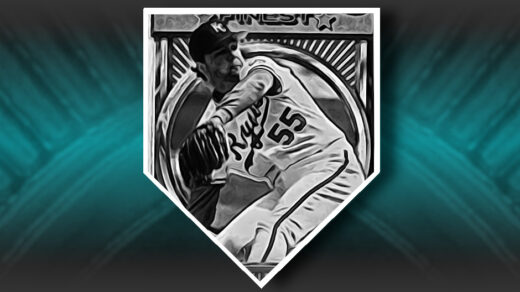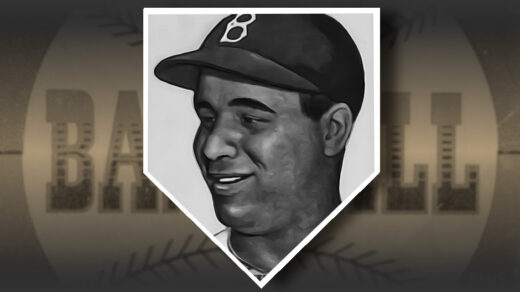There are mail days and then there are mail weeks. I recently experienced one of the latter when a trio of packages arrived from three different corners of the map. Each parcel had begun over a two month period as an outgoing shipment from my house, and by coincidence, returned home inside of a four day period.
Return Address: Ambler, PA
The most anticipated package was one that carried the name of a former American League MVP on the return label. I previously wrote about a distant relative who played with the Athletics in the 1950s. I decided to reach out to any of his surviving teammates and inquire about any memories they shared. To my surprise I found that only Bobby Shantz was still alive. At age 98 he remains in active correspondence with fans so I promptly sent a letter to his home address.
Shantz replied in a very speedy six days. He wrote his response in the margins of a sheet of photographs I had sent in hopes of jogging his memory. His note refers to fellow pitcher Charlie Bishop as “…a fine pitcher and a real nice guy.” He then goes on to say he did not remember him too well, either in honesty or as a terrific deadpan punchline to the preceding compliments.
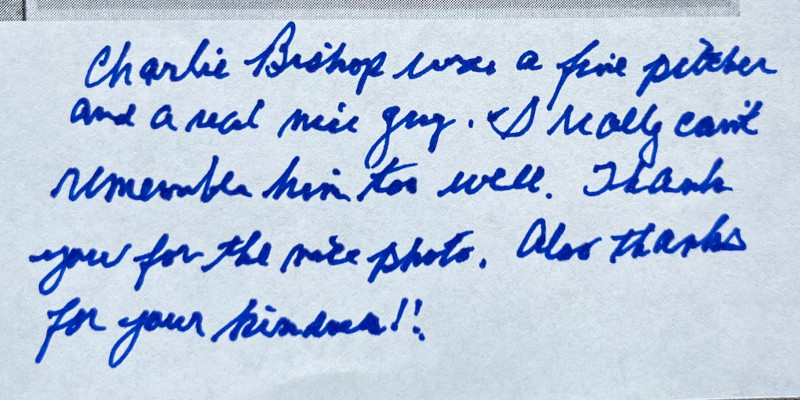
I did not request an autograph, as responding to a letter asking for stories about a teammate would probably take much longer than simply signing a baseball card. Shantz proved again why he is so popular with letter writers by enclosing a surprise autographed 5×7 photo with his reply. He signed it with a metallic blue marker that makes for a nice finishing touch. I have seen this photo before and believe he uses it as a his default choice when signing for fans.
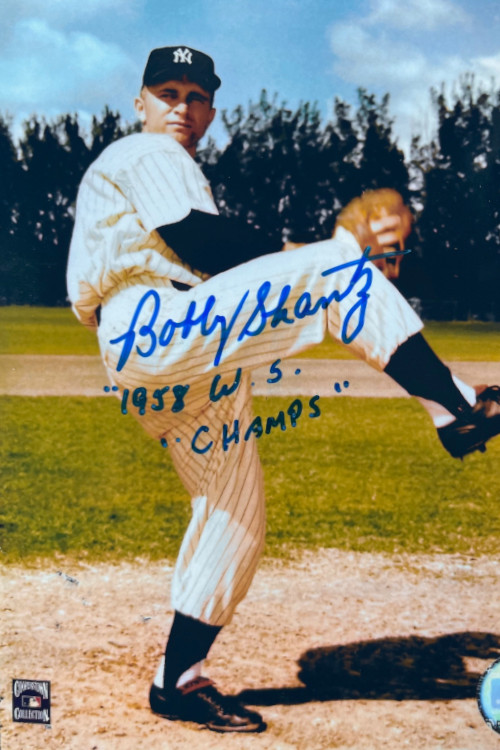
Despite playing half his career with the Athletics, Shantz prefers to wear his Yankees hat at public appearances. 10 Years ago, he gave an interview with Curt Simmons at their local golf course in which he said going to New York was a dream come true. He was tired of playing for a penny pinching second division team. When news of his trade to the Yankees arrived, he said he ran from Philadelphia to New York rather than waste any time waiting for the bus.
Return Address: Newport Beach, CA
At the start of the year I mailed a small stack of cards for grading at PSA and SGC, two distinctly separate grading services. By the time the cards returned to my address the two firms were operating under the same corporate umbrella.
The PSA consignment was focused on a single card: The 1990 Donruss Aqueous Test Issue of Jose Canseco. I wrote about what makes this card such an amazing card, from its interesting back story to the sheer luck in coming across what until now had been the most difficult card to locate from a set made famous by its scarcity. As stated in the previous write-up, this card is now the centerpiece of my Canseco player collection.
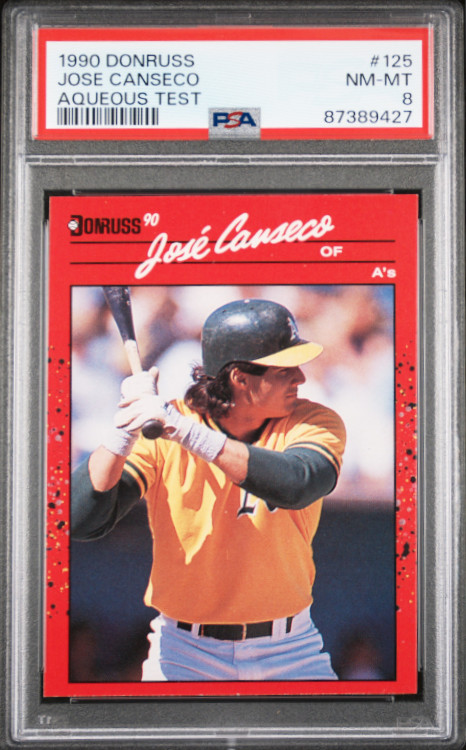
Return Address: Boca Raton, FL
I appreciate visual continuity in my collection. Cards costing more than a few bucks and being purchased without the ability to visually inspect them are usually sought out already graded. My collection has several player and set specific silos and I prefer to match up all the matching cards with a specific grading service. My Canseco cards and ’93 Finest are almost uniformly in PSA slabs. My Charlie Bishop and vintage set projects are predominantly in SGC holders.
One of the cards sent to SGC was this 1949 Leaf Dizzy Trout. Expectations going into this were for a grade of 3 VG or 4 VG-EX. The card has all the usual centering issues and the early stages of corner rounding present but matches up very well with other VG-EX cards in my possession. The corner issues are more pronounced when viewed from the back, so I was curious as to which way the grader’s opinion would fall.
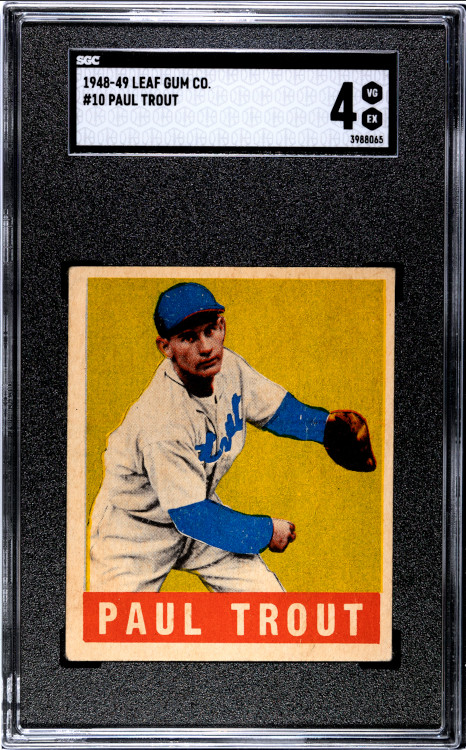
This is the Internet, so we can’t let a potential controversy go by unnoticed. A pair of 1952 Topps cards were part of this submission, ones that I had assumed were in the neighborhood of GD-VG or VG. The Warren Spahn card shown below was one I had been carrying in my records as being GD-VG. The corners are worthy of an EX-MT grade, but the overall score is brought down by centering, a touch of foxing in the upper right, and a feathery crease that creeps from the top of Spahn’s hat to his eye on the right side of the card. The card looks very solid until exposed to light from just the right angle.
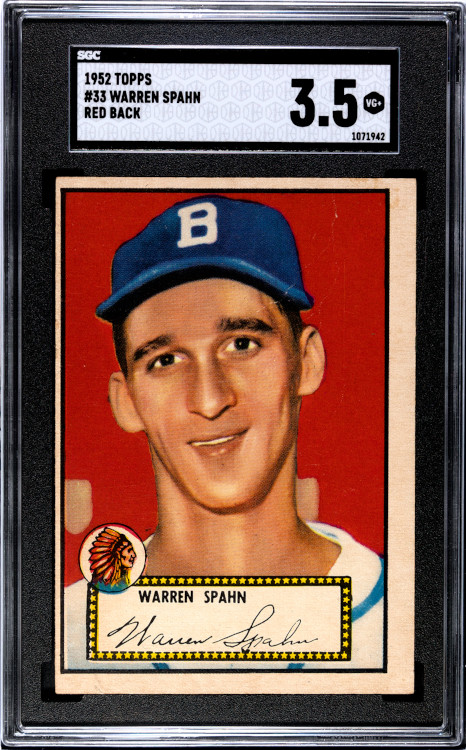
I think SGC was too generous with the grading of the Spahn card, but perhaps those corners made a good impression on the person assessing the card.
Here is where I am flummoxed. This Monte Irvin card was submitted directly behind my order’s Spahn card. I thought this one was solidly in the VG camp, with the grade being brought down primarily due to some corner wear and centering similar to the Spahn example. Importantly, there are no creases, stains, writing, or any other major defect present. I cannot see why this card was graded as being in Fair condition.
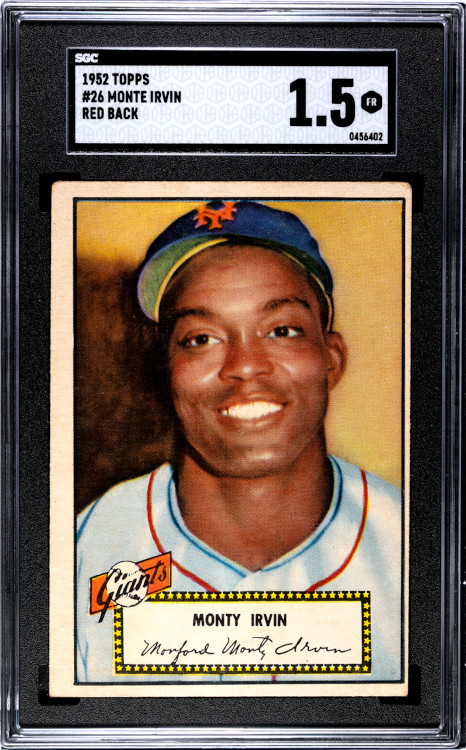
My pet theory is that the Spahn and Irvin cards were graded one after the other with the grading notes being transposed. Perhaps the grader was interrupted by breaking news, like his employer being sold to a rival firm (announced the very day this card left “grading” status). Oh well. If all my ’52 Topps could look like this I would pick them up in a heartbeat.
Here’s the big one from the SGC order: A 1952 Parkhurst minor league Charlie Bishop card from Canada. I already had a low grade example of this card but had continued searching in hopes of locating the best possible version. Last fall I came across a terrific exemplar with solid corners and minor centering issues.
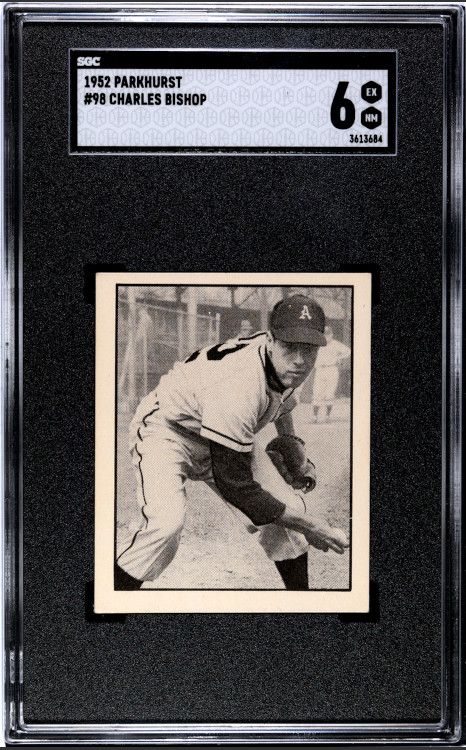
Early Parkhurst cards are notoriously difficult to find with sharp corners, as the factory packing them for distribution randomized loose cards by rolling through a portable cement mixer. The card came back in an EX-NM slab (SGC calls this EX-NM instead of the more popular EX-MT), making it the highest numerically graded example of the card from any grading service. I am particularly happy about this as the card was acquired raw. Mission accomplished!



